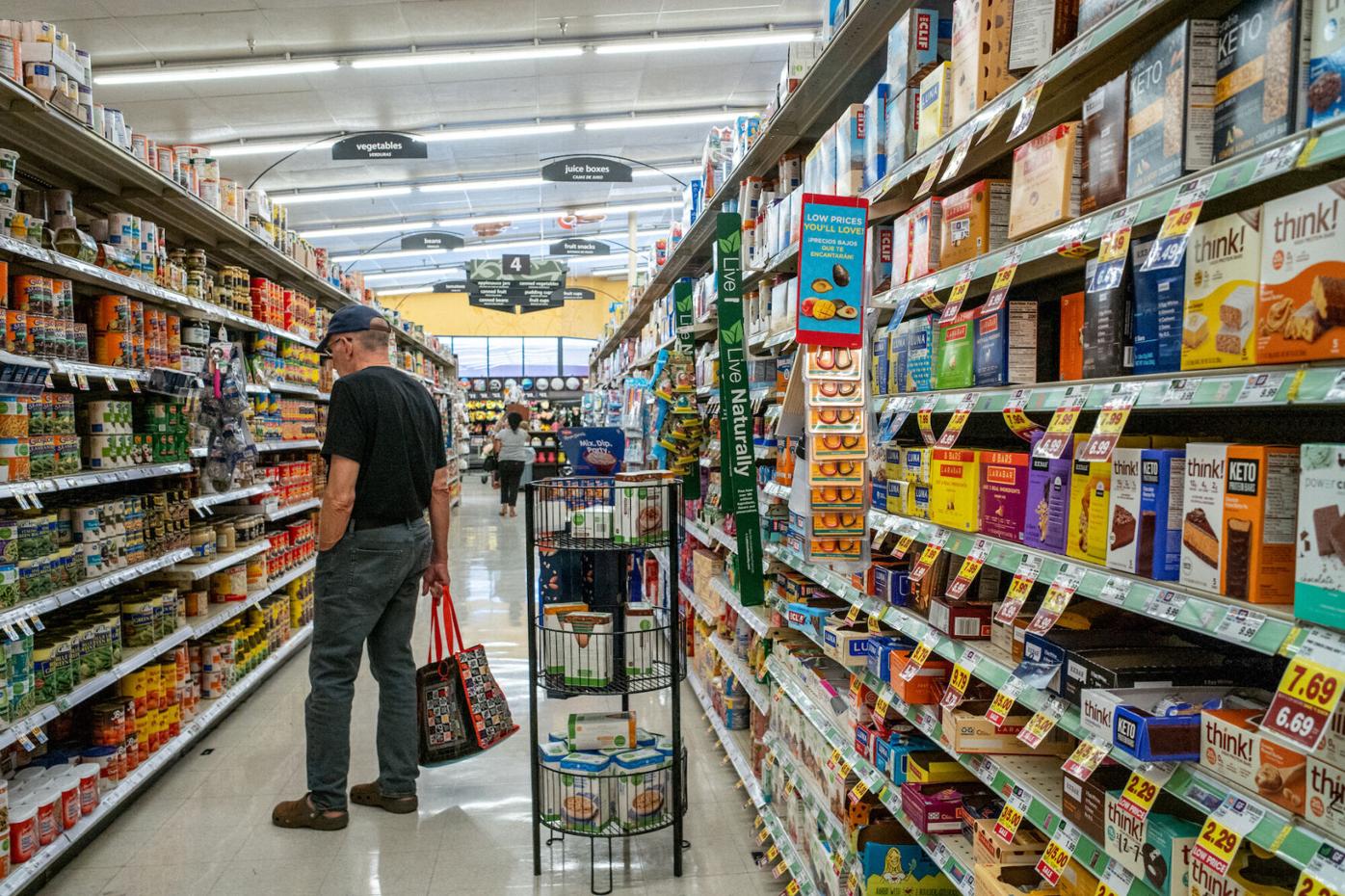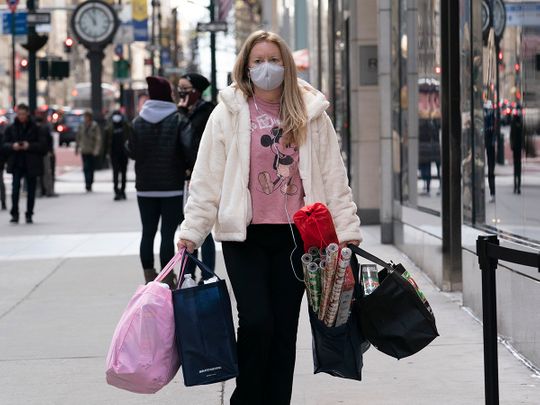The US economy returned to growth in the last quarter, rising 2.6%.

From July through September, the US economy expanded at an annual pace of 2.6%, ending two consecutive quarters of economic recession and overcoming punishingly high inflation and interest rates.
According to the estimate released by the Commerce Department on Thursday, the country’s gross domestic product, which is the most comprehensive indicator of economic production, increased in the third quarter of 2022 after declining in the first half. Stronger exports and consistent consumer spending, supported by a strong employment market, enabled the largest economy in the world resume growth, however, the economic picture has grown direr.
In an effort to combat recurring inflation, the Federal Reserve has aggressively increased interest rates five times this year and plans to do so once more next week and once more in December. Jerome Powell, the chair, has cautioned that the Fed’s rate increases will result in “pain” in the form of increased unemployment and perhaps a recession.
As Americans start to cast their ballots in the midterm elections that will determine whether President Joe Biden’s Democratic Party keeps control of Congress, they are concerned about inflation and the possibility of a recession. The newest GDP data from the government arrives at this time. A recurring theme in Republican criticisms of Democratic economic management is inflation.
Households all around the nation have been under pressure due to consistent price increases, which are still close to a 40-year high. Meanwhile, increasing loan rates have stalled the housing market and are expected to cause longer-term harm to a wider range of industries. The prognosis for the global economy also gets worse the longer Russia’s conflict with Ukraine continues.
The U.S. economy saw yearly decreases of 1.6% from January through March and 0.6% from April through June, which were both reversed by the third quarter’s recovery. One unofficial definition of a recession is a period of decreased economic production for four consecutive quarters. However, the majority of experts have stated that they think the economy avoided a recession due to the still-stable employment market and consistent consumer spending. However, the majority of them have voiced worry that a recession is likely to occur next year as the Fed gradually restricts credit.
The first half of the year’s contraction of the economy was largely brought on by factors that don’t reflect its underlying strength, according to Preston Caldwell, head of U.S. economics for the financial services company Morningstar, and thus “very likely did not constitute a genuine economic slowdown.” He gave the example of a decline in corporate inventory, which is a cyclical phenomenon that eventually tends to reverse itself.
The housing sector in particular has been hurt by higher borrowing costs. A year ago, the average rate on a 30-year fixed-rate mortgage was just 3.09%; now, it is close to 7%. For eight consecutive months, fewer people are buying existing houses. New house construction is down about 8% from a year earlier.
The economy still has some strong areas. The first is the crucial employment market. The Labor Department’s data stretch back to 1940, and this year employers created an average of 420,000 jobs each month, putting 2022 on course to be the second-best year for employment growth (after 2021). Last month’s unemployment rate of 3.5% matched a half-century low.

Though there has been a slowdown in hiring. The economy added 263,000 jobs in September, which is a respectable number but the fewest since April 2021. Over the summer, the U.S. economy expanded slowly, raising concerns about an impending recession while also sustaining hope that one could be avoided.
According to official figures released on Thursday, the third quarter saw a return to growth in the gross domestic product after two consecutive quarters of recession. However, consumer spending decreased as inflation reduced household purchasing power, and the property market had its worst decline since the early epidemic months as a result of the significant rise in interest rates.
The study brought attention to the fine line the Federal Reserve must walk as it attempts to control the fastest inflation in four decades. Interest rates have been sharply increased recently, and policymakers are anticipated to do so again at their meeting next week, in an effort to cool off soaring demand, which they feel, is a contributing factor to the sharp rise in prices. But they are attempting to do so without completely halting the rebound. The third-quarter figures indicated that the road to such a “soft landing” was still available but not very wide (G.D.P. grew 0.6 percent, according to the Commerce Department, a 2.6 percent annual rate of growth).
Diane Swonk, the top economist at the accounting company KPMG, said, “It’s just a really hard needle to thread.” The foundation’s flaws are already becoming visible. In a statement released early on Thursday, President Biden praised the study. Republicans in Congress have been pushing for a downturn, he claimed, and doomsayers have been claiming that the U.S. economy is in one for months. But today we received more confirmation that our economic recovery is progressing.
According to one widely used definition, the U.S. economy entered a recession at the beginning of the year when it had two consecutive quarters of declining G.D.P. officially, however, a team of academics at the National Bureau of Economic Research determines recessions by examining a wider range of variables, such as employment, income, and consumption.
The third-quarter data, which slightly surpassed forecasts’ estimates and contradicted the opinions of the majority of analysts, offered more proof that a recession had not yet started. However, the foreign commerce component, which sometimes shows large fluctuations from one year to the next, distorted the total G.D.P. estimates. Economists frequently concentrate on less volatile variables, which revealed the recovery was gradually losing steam as the year went on. According to one carefully followed indicator, private sector demand virtually stopped growing in the third quarter. Some experts anticipate that G.D.P. will decline in the last three months of the year.
According to Bank of America’s senior U.S. economist, Michael Gapen, “Ignore the headline number – growth rates are dropping.” “From here, it wouldn’t take much more slowdown for the economy to enter a recession.” The foundation of the American economy, consumer expenditure, increased by 0.4 percent in the third quarter, down from a 0.5 percent growth in the second quarter. While expenditure on services slowed but remained healthy, spending on goods declined for the third straight quarter.
Despite increased interest rates and higher costs, consumer spending has remained high as people have continued to spend money on vacations, dining out, and other in-person pleasures that many people lost out on before the epidemic. However, it’s uncertain how long that might endure. The third quarter saw Americans save the least amount of their after-tax income since 2007, at 3.3%.
Consumers today have, in my opinion, “borrowed time,” according to Wells Fargo senior economist Tim Quinlan. Savings are down, credit card borrowing is increasing, and wage growth is outpacing cost growth. As oil prices decreased in the third quarter, inflation declined. After declining in the second quarter, this resulted in a rise in personal income adjusted for inflation. But since then, the price of oil has slightly recovered, and the cost of food, rent, and other necessities has also gone up.
The housing sector has clearly felt the effects of increased interest rates as both home construction and sales have experienced significant declines recently. The third quarter saw a 7.4 percent decline in the housing sector, deducting 1.4 percentage points from the annualized growth rate of G.D.P. as a whole. Businesses reduced their spending on commercial and industrial real estate, while additional statistics revealed on Thursday that a significant indicator of company investment decreased in September. As fewer individuals buy houses and need to furnish them with furniture and appliances, consumer spending is projected to decline further as a result of the housing downturn. Homeowners will also feel poorer. On Thursday, mortgage rates surpassed 7 percent, the highest level since 2002.
According to Ms. Swonk of KPMG, “Housing is basically the single biggest trigger to further expenditure, and it’s not there anymore; it’s moving in reverse.” This has been a dramatic reversal in the property market, and when things move swiftly, one begins to worry what the knock-on and spillover impacts may be.
As families were forced to stay at home during the epidemic, there was a high demand for stainless steel kitchen appliances from Thor Kitchen. The difficulty of getting the company’s products from its manufacturers in China to its clients in the United States made it difficult for it to meet that demand.
These tendencies are now changing. Supply networks are starting to function normally, and the inventory that Thor Kitchen bought months ago is starting to fill its warehouses. Demand, however, is declining as consumers cut down on their spending due to the sharp decline in house sales and the decreased demand for new refrigerators and stoves.
According to Timothy Lee, marketing manager for the business, “a lot of firms are going to be sitting on a lot of things that are now not selling.” “We placed those orders in June, when demand was still rising and quite strong.” The business, which has its headquarters outside of Riverside, California, has reduced expenditure on advertising and employment, among other things. According to Mr. Lee, these actions were taken in advance in anticipation of a downturn. Even as prices were rising, it recently started providing a promotional discount of 10%.
The offer hasn’t done much to boost sales thus far, though. Mr. Lee asserted that a recession is “already present in our eyes.” That negative view is held by many Americans. Consumer confidence indicators fell this year as gas prices skyrocketed and have since stayed low. Companies have started to be ready for a recession by cutting back on advertising and talking to investors about backup plans.
The economy still has some significant strengths, though. Although hiring has slowed slightly, there are still few layoffs in the majority of industries due to the robust employment market. Due to reduced expenditure and increased government aid early in the epidemic, many households were able to accumulate a cash reserve that would enable them to continue spending even if their salaries stagnated.
These characteristics provide some cushion for the recovery, but they also make it more difficult for the Fed to raise interest rates since the economy is less responsive to them. At the same time, the Fed has limited control over food and energy prices, which are affected by world affairs like the conflict in Ukraine. A number of factors are currently pushing towards high inflation, according to Carola Frydman, an economist from Northwestern University’s Kellogg School of Management. “Monetary policy cannot solve all problems easily.”
In some ways, the third quarter mirrored the first, when the G.D.P. decreased while consumer spending increased. International commerce was the primary cause of the fluctuations in both situations. Early this year, imports—which are not included in calculations of domestic production—rose sharply as Americans increased their purchases of products from abroad as a result of the robust economic recovery. As the rest of the globe recovered from the epidemic more slowly, exports fell.
Both trends have started to turn around as American consumers have begun to spend more on services rather than imported items and as overseas demand for American-made products has increased. Disruptions in the supply chain have increased the volatility, causing significant changes in the statistics from one quarter to the next. Few analysts anticipate that the robust trade data from the third quarter will last, particularly given that the strong currency would reduce the appeal of American goods abroad.
edited and proofread by nikita sharma




